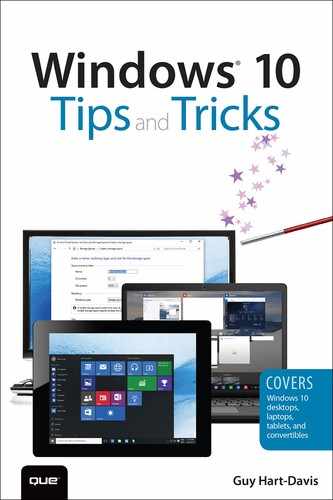Book Description
Easily Unlock the Power of Your New Windows 10 Computer
Discover hundreds of tips and tricks you can use right away with your Windows 10 computer to get more done and have more fun.
You’ll learn how to use your Windows 10 computer both as a powerful communication, organization, and productivity tool and as a feature-packed entertainment device. Guy Hart-Davis shows you strategies for making the most of Microsoft’s robust built-in apps, from the new Edge browser to your Cortana personal assistant.
Easy to understand and nontechnical, Windows 10 Tips and Tricks is perfect for beginners--and for more experienced users ready to get more productive or move to a new computer. Whether you’re running Windows 10 on a desktop, a laptop, or a tablet, get this book and run it better!
Here’s just a sampling of what this book’s tips, tricks, and strategies will help you do:
Set up your Windows 10 computer and make it work just the way you want
Navigate Windows 10 like a pro
Make the most of Windows’ resurrected and improved Start menu
Explore the web faster, smarter, and more safely with Microsoft Edge
Enter text whatever way you like best--including the on-screen keyboard and handwriting panel
Communicate via email, Skype, and much more
Quickly find whatever you’re looking for, wherever you’ve stored it
Share your device with others and still keep it secure
Connect to wireless networks more reliably, with better performance--even hidden networks!
Use multiple displays at once--even TV screens
Give yourself faster access to the apps and files you need the most
Protect your privacy and choose which notifications to receive
Organize and share your media library
Supercharge your productivity with virtual desktops and other shortcuts
Improve performance, fix problems, and keep Windows 10 working reliably
